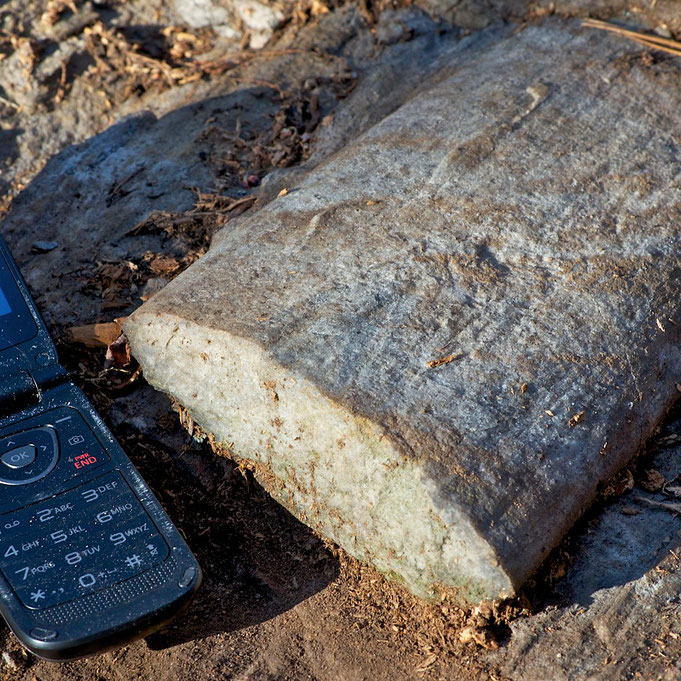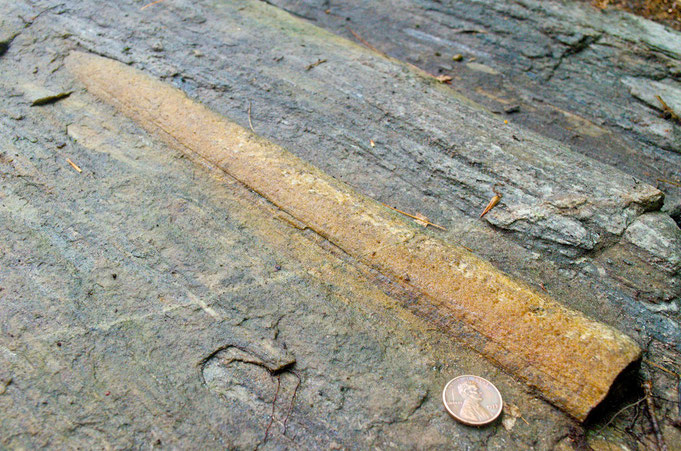A Unique Geological Feature of Distant Hill

Stretched pebbles are formed from a specific combination of pressure, heat, and a linear movement of the earth's sub-surface as a type of rock called a metaconglomerate is being formed.
A metaconglomerate is a metamorphic rock composed of pebbles and gravel that have been flattened due to directed pressure. Sometimes, strongly directed metamorphism results in a stretched-pebble conglomerate.
The parent rock for a metaconglomerate is a sedimentary rock conglomerate. The rock forms from large, rounded sediment grains such as pebbles and cobbles deposited by a stream. If the sedimentary deposit becomes buried, compaction and cementation occur forming conglomerate rock. If burial continues to great depth, the pebbles and cobbles become flattened from the pressure. In some cases the pebbles may become stretched from linear movement.

Most metamorphic rocks form at a depth of 25 to 50 miles (40-100 km) where pressures are 10,000 to 30,000 times greater than at the surface.
Metaconglomerates are considered high-grade metamorphic rock, meaning they formed at a temperature of greater than 1000°F (≈600°C).
Occasionally stretched pebble metaconglomerates may work their way up to the surface of the earth, as is the case with these unique outcroppings here at Distant Hill Gardens in Walpole, New Hampshire, USA.

